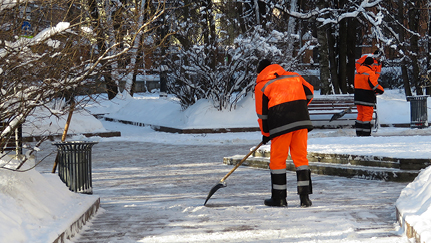Help your employees help protect themselves when they work in sub-freezing temperatures.
Subscribe to our newsletter for timely content in your inbox

Working outside in cold temperatures is a reality for many workers. Beyond just being uncomfortable, outdoor work in extreme cold is dangerous due to the threat of frostbite, which can cause serious damage to skin and other tissues.
In severe cases, frostbite may require amputation of the affected area. That’s why it’s important to recognize and heed the warning signs of frostbite before the condition becomes severe.
When symptoms of frostbite develop, the victim requires emergency medical care. If professional help isn’t readily available, take these actions:
The answer depends on a number of factors, including a person’s age and physical condition, outdoor temperature, wind conditions and humidity. In extreme conditions, it’s best to stay inside.
But if you must spend part of your workday in a cold environment, make sure you dress appropriately.